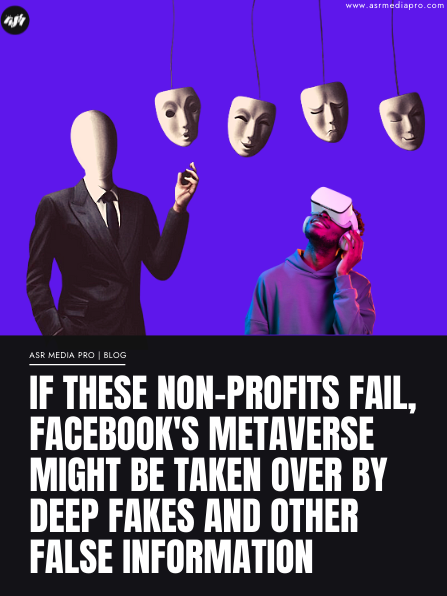
How to Use YouTube’s Algorithm to Your Advantage
How to Use YouTube’s Algorithm to Your Advantage The algorithm may make or break your content strategy if your company uses YouTube. It’s crucial that
Online advertising has tremendous potential for assisting businesses in acquiring new customers. With over 4.6 billion people actively using the internet in some capacity, it’s understandable why online advertising would be appealing.
Programmatic advertising is an incredibly efficient form of online advertising with an average cost-per-lead (CPL) of $38—a fraction of the cost of a lead generated through traditional advertising channels such as television, radio, and print, which have an average CPL of $619. (Source: Linchpin SEO).
This explains why advertisers in the United States were projected to spend approximately $106 billion on digital display advertising in 2021. However, with such a large sum of money at stake, it was inevitable that fraudsters would emerge to prey on those attempting to run programmatic advertisements.
What exactly is programmatic advertising fraud? How does it function? What’s more, what can you do to safeguard your programmatic advertising against fraud?
Before delving into the mechanics of programmatic fraud, it’s necessary to understand what programmatic advertising is.
Programmatic advertising is a type of digital marketing in which software determines when and where advertisements are displayed to a specific audience. When deciding which advertisements to display in front of them, the software may consider a variety of rules and attributes, including the following:
How much the advertising merchant is willing to pay for ad space via the demand-side platform (DSP).
Keywords associated with the user’s browsing/recent search history and the currently viewed website.
The basic objective is to place an appropriate advertisement in front of an interested audience at an appropriate time for them to consider the service or product being advertised. Although the majority of programmatic advertisements take the form of banner display advertisements or videos on websites, other types of advertising are also possible.
Programmatic fraud is a subset of advertising fraud in which fraudsters attempt to profit from programmatic advertising.
The strategies used by fraudsters will vary according to the type of programmatic ad fraud campaign. There are numerous attack vectors for programmatic campaigns, owing to the disparate revenue models and varying levels of protection provided by different ad networks for their programmatic ad platforms.
There are numerous types of programmatic ad fraud that attempt to defraud advertisers and even ad networks in a variety of ways. Numerous these strategies make use of malware, bots, and even human fraud farms in order to maximise the fraudster’s financial gain while requiring the least amount of time and effort.
1. Forgery of Website Domains to Increase Bid Prices
Domain spoofing is a type of fraud that frequently targets programmatic advertising networks in order to defraud them and, ultimately, their customers. The fraudster’s basic strategy is to take one website and attempt to pass it off as another, more valuable one in order to charge more for advertising space.
For instance, a fraudster may notice that a popular website called Wakerpedia.com receives a lot of traffic and create a site that looks identical to it but uses a slightly different domain name such as Wackerpedia.com or Wakerpedla.com and passes it off as the more popular site. Unsuspecting victims may be required to pay a fee to have their advertisements appear on the site.
The worst part about this strategy is that it frequently accomplishes much more than simply robbing ad networks and their customers of money. Often, spoofed websites are infected with malware and spam—and any advertisements that appear on them may become associated with them. This can be detrimental to the brands whose advertisements are being displayed.
2. Stacking of advertisements and pixel stuffing
Certain fraudsters attempt to claim credit for “displaying” an advertisement when, in fact, they did not. By employing techniques such as ad stacking and pixel stuffing, fraudsters can claim credit for “displaying” advertisements to website visitors when the visitor had no chance of seeing or clicking on the advertisement.
Ad stacking is the practise of concealing advertisements on a page in order to maximise impressions while conserving the site’s available “real estate.” The page’s advertisements are all stacked on top of one another, taking up the same space. Because only the top ad is visible in this scenario, it is the only one with a chance of performing. Every other advertisement is buried beneath and is not clickable, resulting in no results despite generating an impression.
Pixel stuffing is another technique used by fraudsters to cram more ads onto a page without them taking up too much space. The display advertisement or video is shrunk down to a single pixel on the page in this fraud technique. This is worse for advertisers than ad stacking, as ad stacking ensures that at least one ad is visible. With pixel stuffing, website visitors have no chance of seeing the advertisement and reacting to it.
3. Click Fraud.
Some fraudsters may use bots or click farms to repeatedly click on the ad to generate revenue in programmatic campaigns that pay on clicks rather than impressions.
A simple botnet is inexpensive to purchase, allowing even the most inexperienced hacker to create a network of dozens, hundreds, or even thousands of bots capable of clicking on ads from a wide variety of IP addresses.
Human fraud farms rely on large groups of real people—often employed in sweatshops in other countries—using a variety of digital devices to click on ads as quickly as possible while switching between devices, browsers, or emulator tools. You might assume that the cost of labour would be prohibitively high to make this approach economically viable, but the workers on these farms earn pitiful wages.
Thus, how much do you pay for programmatic fraud? The answer is contingent upon the amount of money you spend on programmatic advertising, the revenue model you employ, and the safeguards in place between you and your programmatic ad platform provider.
The average online advertising campaign has a fraud rate of 25%—programmatic campaigns frequently have fraud rates of 40% to 50%. In other words, if you spend $100,000 on programmatic advertising, you can anticipate paying a fraudster $40k-$50k of that money for absolutely no return on investment.
Could you imagine purchasing any other significant capital asset, signing a contract, and handing over hundreds of thousands of dollars only to discover that 40% to 50% of the assets you paid for were missing upon delivery? How much of a disruption would that cause to your operations?
This does not include the potential loss of momentum in your industry vertical as competitor ads reach your customers in place of your own, or the reputational damage associated with being associated with malware sites. It’s past time to declare victory over programmatic ad fraud.
While there is no silver bullet that will prevent 100 percent of ad fraud, there are steps you can take to safeguard your business and prevent the vast majority of ad fraud cold. Stopping programmatic fraud, in particular, can be challenging, as the fraud frequently occurs on websites over which you have no control.
Examining the websites on which your advertisements are being displayed. Examine the site’s registry data to ensure that the owner/name publisher’s corresponds to what it should for the domain provided, to determine whether the domain is known to offer advertising space to other organisations, and to inspect the URL for any anomalies that may indicate spoofing.
Verifying the anti-fraud measures implemented by the provider of the real-time bidding (RTB) platform. Are these fraud-prevention measures industry-certified by a reputable certification body such as the Trustworthy Accountability Group (TAG)? If this is the case, check the TAG registry to ensure they are actually listed there! Numerous platforms claim to have anti-fraud protection, only to be exposed as using ineffective single-metric filters that do not effectively stop fraud.
Checking for abnormalities in your marketing performance. For instance, if you notice a significant increase in clicks but no increase in leads or customers, this could be indicative of ad fraud (or ineffective ad placements).
Using a solution to combat ad fraud in programmatic campaigns. Rather than reviewing marketing data painstakingly in search of patterns indicative of fraud, you can automate the process of programmatic fraud detection by leveraging an ad fraud solution. With a reputable ad fraud solution, you can safeguard against bad actors, increase conversions in programmatic campaigns, and, if necessary, confront fraudsters with evidence of their wrongdoing.
Using an ad fraud solution is the simplest and most effective method of preventing fraud. It eliminates the need for manual data analysis (a process that often requires years of experience to accurately identify fraud). Rather than that, you can delegate detection to the experts and concentrate on what matters most—your business!

How to Use YouTube’s Algorithm to Your Advantage The algorithm may make or break your content strategy if your company uses YouTube. It’s crucial that

If These Non-Profits Fail, Facebook’s Metaverse Might Be Taken Over By Deep Fakes And Other False Information Simply called Meta, Mark Zuckerberg’s virtual reality world,

Customer Relationship Management Techniques Your Company Needs to Use in 2022 Create a Multi-Channel Presence This type of traditional marketing doesn’t only employ one channel
